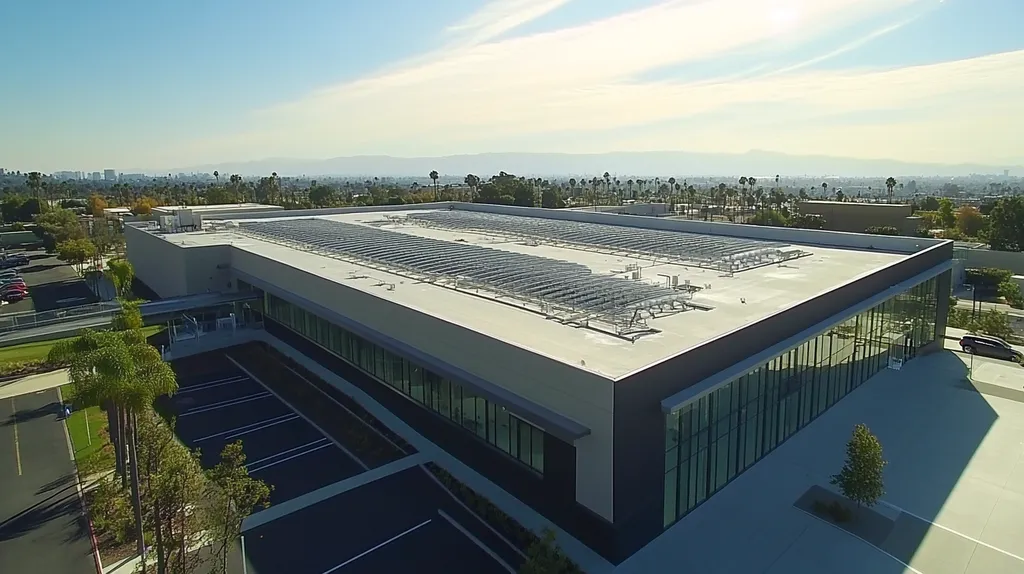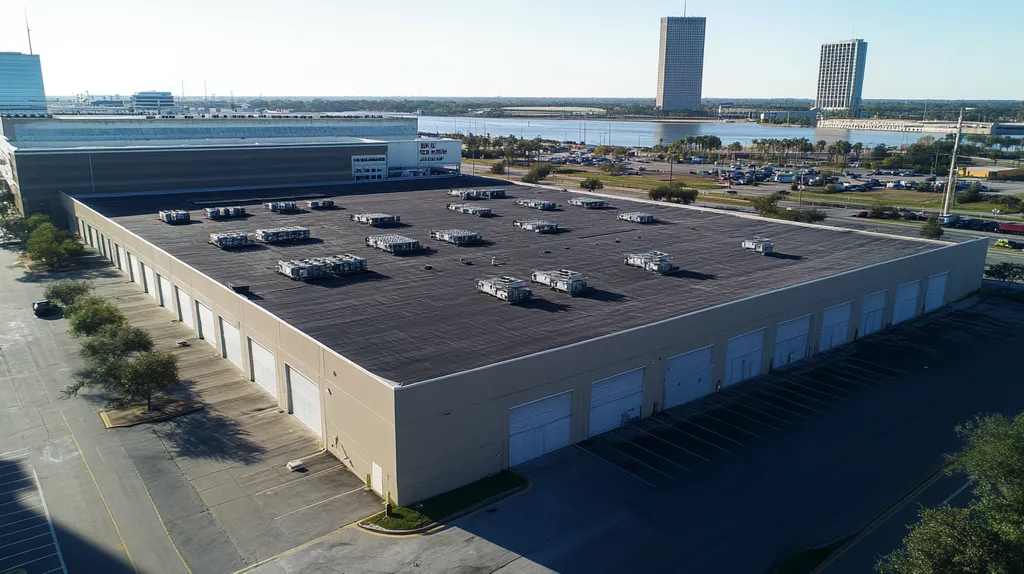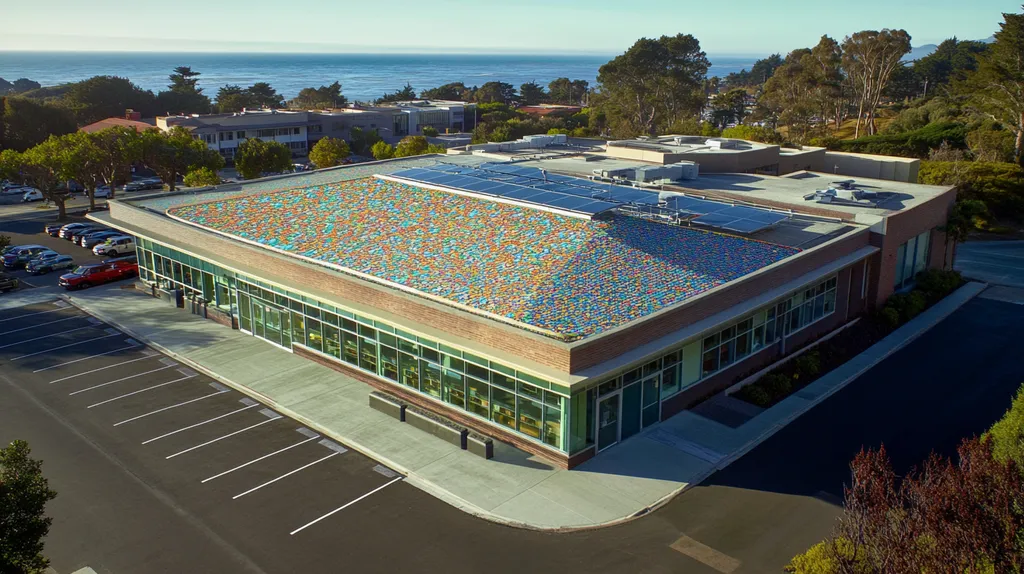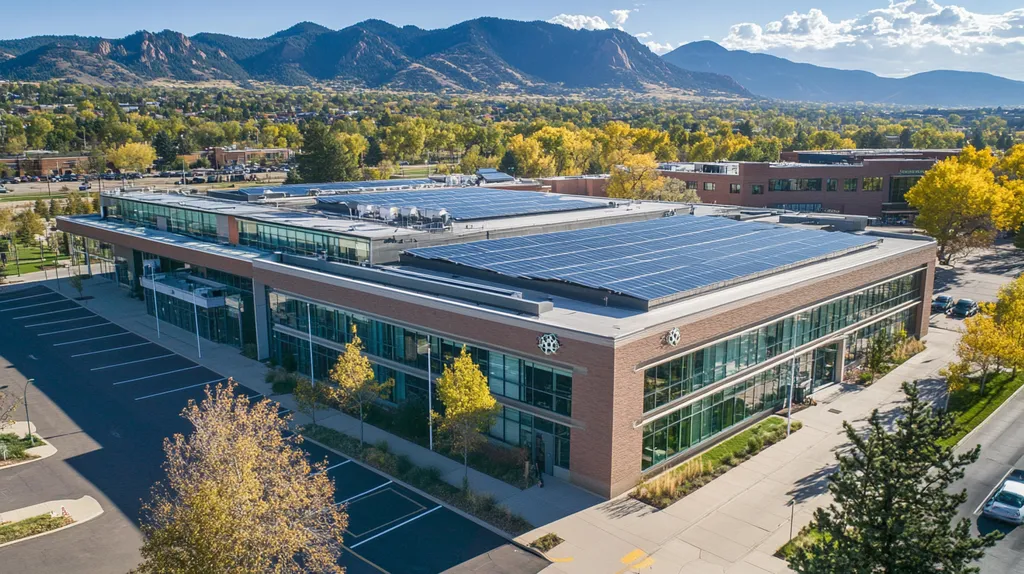Ineffective contractor coordination costs the construction industry an estimated $31.3 billion annually in rework expenses, with roofing projects particularly vulnerable to costly delays and quality issues.
The complexity of modern roofing systems demands seamless collaboration among multiple trades, from HVAC specialists to electrical contractors.
Understanding the fundamentals of on-site coordination has become essential for property owners and facility managers seeking to protect their investments and ensure project success.
This comprehensive guide examines the critical elements of effective contractor collaboration, providing practical strategies for managing multi-trade interactions while maintaining quality and efficiency throughout the roofing lifecycle.
SECTION 1: THE BASICS EXPLAINED
Coordinating with contractors on-site is vital for the success of any roofing project. Strong collaboration among various trades can substantially reduce costly errors and delays. Studies indicate that miscommunication can inflate project costs by as much as 20%, affecting both budget and timelines. Grasping the fundamentals of on-site coordination lays the groundwork for productive teamwork, ensuring that every aspect of the project aligns with the overall goals.
What It Is (In Plain Language)
Coordinating with contractors means managing the interactions of different teams on a construction site. This includes roofers, electricians, plumbers, and other skilled trades involved in the project. The objective is to create a harmonious workflow, ensuring that everyone understands their schedules, responsibilities, and expectations.
Effective coordination is critical for maintaining safety and efficiency. For example, a roofing crew may need to work closely with HVAC contractors to ensure safe access to roof-mounted equipment. Establishing clear lines of communication allows teams to address potential issues together, minimizing disruptions.
In essence, coordination is about organizing tasks and timelines so that the work of each team complements rather than conflicts with others. It emphasizes careful planning and transparency, reducing confusion that might lead to mistakes.
By presenting these concepts clearly, property owners can appreciate the pivotal role of coordination in achieving project success. Smooth interactions not only facilitate quicker completions but also lead to significant cost savings.
Why It Matters (To Your Building)
The outcome of a roofing project has a direct influence on the overall condition of a building. When contractors collaborate effectively, it results in superior workmanship, reducing the chances of errors such as missed installations or inadequate sealing, both of which can cause leaks.
Furthermore, effective coordination contributes to a building’s sustainability. Efficient use of materials, proper scheduling, and timely inspections help minimize waste and enhance energy efficiency. Buildings managed with comprehensive coordination typically see improvements in longevity and operational performance.
For property owners and facility managers, the risks of poor coordination are significant. Delayed timelines and unexpected costs due to rework can disrupt business operations and lead to tenant dissatisfaction.
Ultimately, solid contractor coordination fosters a safer, more dependable, and energy-efficient building that meets operational needs. Investing time and resources in upfront planning pays dividends in efficiency and cost-effectiveness.
How It Works
Effective contractor coordination begins long before any physical work begins. It requires detailed planning and the establishment of clear communication channels. Defining roles and responsibilities at the outset sets precise expectations for all parties involved.
Regular meetings and continuous updates allow teams to adjust schedules and address concerns promptly, creating a collaborative environment that mitigates the risk of larger issues arising. This proactive approach is foundational for successful project management.
Incorporating technology, such as project management software, can also enhance communication across teams. These tools facilitate real-time progress tracking and share immediate updates, making it easier for all contractors to stay informed about developments on-site.
Additionally, designating a single point of contact can simplify interactions. This designated individual can relay information among teams, ensuring consistency and clarity throughout the project.
Implementing these strategies empowers property owners to navigate the complexities of contractor collaboration effectively, helping to ensure that roofing projects are completed on time and within budget.
SECTION 2: PRACTICAL APPLICATIONS
Effective collaboration with other contractors on-site is not just beneficial; it’s essential for avoiding costly setbacks in roofing projects. Industry studies reveal that over 30% of construction delays stem from miscommunication and coordination mishaps. By nurturing seamless working relationships among contractors, project risk diminishes significantly, resulting in enhanced quality and timely completion. This section will delve into typical scenarios necessitating collaboration, highlight critical phases of roofing projects that demand attention, and examine how roofing systems interact with other vital building components.
Common Uses & Examples
In commercial and industrial roofing endeavors, effective coordination with different contractors is pivotal at various stages of the project. For instance, when roofers collaborate with HVAC installers, clear communication ensures that equipment is correctly placed without compromising the roof’s integrity. Additionally, during skylight installation, roofers must work closely with electricians and interior contractors to manage openings safely and effectively.
Another critical moment arises during building renovations. When roofing materials are being removed, roofers must coordinate with demolition teams to protect underlying systems from damage. Neglecting to work together in such instances can lead to unexpected expenses and prolonged project timelines.
Furthermore, collaboration is key when engaging waterproofing and insulation professionals. Proper alignment of these systems is crucial for the energy efficiency and durability of the roofing solution.
In conclusion, effective contractor coordination can be illustrated through practices such as simultaneous scheduling, pre-job alignment meetings, and meticulous documentation, all of which pave the way for smoother operations and project success.
When You Need It Most
Certain phases in roofing projects require heightened focus on coordination. The initial planning stage is paramount. Engaging all contractors early in the project allows for shared insights on timelines and resource distribution, significantly reducing risks of overlapping schedules.
Another vital phase occurs during the actual installation. When various trades are engaged simultaneously, having a well-defined agenda for the day can prevent overlapping responsibilities. For example, ensuring that electrical and plumbing work is finalized before the roof installation can prevent damage and avoid unnecessary rework.
Additionally, organizing regular progress meetings throughout the project fosters ongoing dialogue among key stakeholders. These sessions are key for identifying and resolving potential conflicts before they escalate into larger problems.
Maintaining strong coordination during these critical phases not only keeps the project on schedule but also allows all contractors to work harmoniously, minimizing unnecessary interruptions.
Interactions With Other Systems
Roofing systems inherently interact with a variety of other building systems, making effective contractor collaboration essential. For example, HVAC systems depend on adequate roofing insulation to optimize energy efficiency. Coordinating with HVAC professionals is necessary to identify the correct roof penetration points, ultimately preventing leaks.
Moreover, drainage systems must be perfectly aligned with the roofing design to effectively manage water runoff. Any misalignment between roof slopes and drainage can lead to water pooling, which heightens the risk of damage and leakage over time.
Roofing materials also need to coordinate with safety systems, including fall protection equipment. Ensuring these facets are accounted for in the roofing design can avert potential safety hazards for construction workers.
In essence, understanding these interactions not only minimizes risks but also enhances the functionality and longevity of both the roofing system and other building components.
SECTION 3: KEY TERMINOLOGY DECODED
Understanding key terminology is essential for effective on-site collaboration in roofing projects. Miscommunication can lead to significant mistakes, where a simple mix-up of terms can severely impact timelines and budgets. For example, construction delays resulting from misunderstandings related to roofing specifications can increase costs by up to 20%. This section aims to simplify essential roofing language, industry jargon, and common measurements, enhancing communication among contractors.
Essential Terms Explained
Grasping fundamental roofing terms is vital for executing projects successfully. Terms such as “flashing,” “underlayment,” and “thermal insulation” frequently arise in discussions. Flashing is the material used to prevent water from seeping into joints and roof penetrations. Underlayment serves as a barrier against moisture, while thermal insulation enhances energy efficiency.
A lack of understanding of these terms can result in significant errors, such as improper material selection. For example, choosing the wrong type of flashing can result in leaks, which compromises the entire roofing system. Clear terminology guarantees that all parties involved are aligned, diminishing risks and improving project efficiency.
Furthermore, using straightforward definitions encourages a collaborative atmosphere where contractors can effectively voice ideas and concerns. When everyone understands these core concepts, they can make informed decisions and coordinate smoothly. This collective understanding ultimately results in better project outcomes and increased client satisfaction.
Implementing standardized vocabulary across the board simplifies communication among all parties. With consistent terminology, contractors can interact more easily, preventing confusion that might delay critical tasks. A comprehensive glossary of terms empowers everyone involved to contribute effectively to the project.
Industry Jargon Translated
Industry jargon can often alienate those unfamiliar with it. Terms like “R-value,” “SBS,” and “ballasted roofing” may be familiar to professionals but can confuse property owners. R-value measures thermal resistance, which is crucial for energy efficiency. Understanding this metric enables clients to make informed decisions regarding insulation requirements.
SBS, or Styrene-Butadiene-Styrene, is a commonly used type of modified bitumen in roofing applications. Being familiar with such materials can impact a property owner’s decision based on performance and durability. Meanwhile, ballasted roofing employs heavy materials, such as gravel, to secure roofing membranes, influencing installation methods and maintenance strategies.
Translating this jargon into accessible language helps foster trust between contractors and clients. Clients who understand these terms become active participants in discussions, leading to more tailored solutions. Providing clear explanations of industry terminology enhances overall project collaboration.
Ultimately, demystifying jargon helps bridge the gap between experts and property stakeholders. Shared understanding promotes efficient communication and coordination, significantly reducing conflicts during the project lifecycle.
Measurement & Units Simplified
Accurate measurement and units are critical in roofing projects, with a firm grasp of these metrics determining project success. Common measurements include square feet, pitch, and various thicknesses. For instance, roofing materials are often sold in squares, with one square covering 100 square feet. Understanding these units is essential for proper ordering and installation.
Roof pitch indicates the steepness of a roof, which is vital for assessing drainage and design. It’s typically expressed as a ratio, such as 4:12, meaning there is a 4-inch rise for every 12 inches of horizontal distance. Miscalculating the pitch can lead to an ineffective drainage system, resulting in costly repairs later.
Thickness measurements for insulation materials are also crucial for meeting building codes and energy efficiency standards. Familiarity with these specifications ensures correct installation and optimal long-term performance of the roofing system. Property managers who understand these details can oversee projects more effectively.
When contractors and property owners share a common understanding of measurements and units, the potential for miscommunication diminishes. This synergy leads to smoother project execution and enhanced collaboration, ultimately minimizing errors and delays during construction.
SECTION 4: DECISION FACTORS
Effective coordination with contractors on-site hinges on critical decision factors that can greatly impact roofing projects. Cost considerations, performance trade-offs, and lifespan and durability factors are all crucial elements that warrant attention. Addressing these components early helps prevent costly overruns and ensures project efficiency. In an industry where roofing decisions can reverberate for years, property owners and facility managers must carefully evaluate these factors to safeguard their investments.
Cost Considerations
Understanding the total cost associated with roofing projects is vital for successful contractor coordination. Property owners should look beyond initial installation expenses and consider the long-term maintenance and operational costs. For example, investing in high-quality materials may present higher upfront costs but can lead to significantly lower repair costs in the future.
When comparing bids from different contractors, it is essential to scrutinize not just the bottom line but the specifics of each quote. A lower bid could conceal hidden costs that may arise later, potentially jeopardizing project timelines and budgets. Transparent communication about expectations is key to mitigating unpleasant surprises.
Additionally, potential delays must be factored into overall project costs. If a contractor fails to meet deadlines due to poor coordination, it could result in financial losses for the property owner. Planning should include buffer times in project schedules to account for unforeseen circumstances.
Ultimately, prioritizing value over price is crucial. This ensures that investments align with the property owner’s long-term goals, facilitating better roofing outcomes.
Performance Trade-offs
Performance variables are paramount when selecting roofing solutions. Property owners must assess how different materials and installation methods impact roof efficiency, energy conservation, and weather resistance. While high-performance roofing membranes may entail higher initial costs, the long-term benefits in energy efficiency can be substantial.
In the context of simultaneous contractor engagements, roofing material selections should align with other ongoing projects. For instance, if a general contractor is utilizing a specific HVAC system, the chosen roofing materials must be compatible. Maintaining this alignment minimizes performance conflicts and enhances the overall system efficiency.
Contractors should discuss desired performance metrics at the start of the project to ensure all parties are aligned on objectives. For instance, if a roof must endure heavy rainfall, it is crucial that the drainage systems synchronize with the roofing structure. Lack of collaboration during this phase can lead to significant underperformance and potential damage.
Ultimately, understanding performance trade-offs helps property owners and facility managers make informed decisions that effectively balance cost with the long-term operational efficiency of their roofing systems.
Lifespan & Durability Factors
The lifespan and durability of roofing materials are critical considerations in achieving effective contractor collaboration. Selecting the right roofing solution can dramatically reduce the frequency of replacements and related costs. Property owners must evaluate material longevity and environmental resilience before making decisions.
Diverse roofing materials come with varying expected lifespans. For example, TPO (Thermoplastic Olefin) roofs typically last between 15 to 20 years, while EPDM (Ethylene Propylene Diene Monomer) roofs can last up to 30 years. Understanding these characteristics informs long-term budget planning and investment strategies.
Moreover, it is essential for contractors to agree on durability standards to preempt potential future issues. Roofing solutions designed to withstand local climate conditions, such as high winds or intense sun, are crucial for long-term durability. Conflicts in a contractor’s approach concerning sustainability can increase the risk of premature roof failure.
Property owners and facility managers should initiate discussions about anticipated lifespans and required durability standards early in the planning process. These conversations foster a cohesive strategy when selecting materials and coordinating tasks, resulting in a more resilient roofing system.
SECTION 5: COMMON CHALLENGES
Effective coordination among contractors on-site is crucial to prevent costly delays and maintain project quality. Research indicates that miscommunication and scheduling conflicts could contribute to an estimated $1.3 trillion in lost revenue within the construction industry each year. Property owners and facility managers must recognize common challenges that can disrupt collaboration and adopt strategies to mitigate these risks. Addressing these challenges head-on can significantly improve project outcomes.
Frequent Problems & Solutions
Miscommunication often arises when multiple contractors are involved, stemming from unclear expectations or poor documentation. To counteract this, establishing a clear communication strategy from the beginning is essential. Through scheduled updates and status meetings, all parties can stay informed of progress, thereby minimizing confusion.
Scheduling conflicts present another significant challenge. Contractors may be unaware of each other’s timelines, leading to overlaps that jeopardize project workflows. Utilizing a shared project management platform can alleviate this issue. Such tools allow for real-time updates, enabling all contractors to visualize the project timeline and avoid interference.
Inconsistent quality control is another concern, as each contractor may have differing standards. To achieve uniformity, property owners should outline clear quality expectations at the outset of the project and implement mid-project reviews. Consistent oversight enhances accountability among contractors and elevates overall performance.
Warning Signs To Watch For
A clear warning sign of coordination issues is repeated misunderstandings during meetings. If contractors frequently seek clarification on the same topics, this suggests a breakdown in communication channels. Attention to these discussions can help identify and resolve gaps early on.
Inconsistent productivity on-site may also indicate coordination problems. Observing whether certain contractors are falling behind or appearing unprepared can signal deeper scheduling issues. Monitoring work pace and responsiveness aids in detecting these inefficiencies before they escalate.
Increasing complaints from contractors about overlapping responsibilities is another troubling sign. If roles are not clearly defined, frustration may mount, obstructing smooth operations. Carefully documenting specific roles and responsibilities can help eliminate confusion and encourage a cooperative environment.
Preventative Approaches
Creating a comprehensive project plan is vital for preventing coordination issues. This plan should outline timelines, roles, and performance metrics for all contractors. Sharing this document with all parties fosters accountability and clear understanding of responsibilities.
Training sessions can further enhance collaboration. Joint workshops help contractors appreciate one another’s work processes and better foster teamwork. Such initiatives build mutual respect and awareness, leading to smoother interactions on-site.
Lastly, holding regular follow-up meetings solely focused on coordination can be beneficial. These dedicated sessions can help address emerging concerns and refine collaborative processes. Keeping everyone aligned will enhance teamwork and minimize potential conflicts among contractors.
SECTION 6: NEXT STEPS & RESOURCES
On-site roofing coordination operates within a high-stakes environment shaped by federal regulations and local building codes. Ineffective communication among contractors can lead to costly delays and compromised workmanship. A single scheduling misalignment can derail project timelines and inflate expenditures. Therefore, property owners and facility managers must adopt proactive measures to ensure efficient collaboration among all contractors involved. This section outlines important questions to consider when selecting providers, summarizes essential industry standards, and suggests additional learning resources to deepen understanding.
Questions To Ask Providers
Choosing the right contractors starts with asking targeted questions. It is essential to inquire about their past experience managing multiple contractors on roofing projects. Understanding their communication strategies can provide insights into how they address conflicts and synchronize project timelines.
Another important question pertains to their scheduling flexibility. Can they adapt quickly to weather changes or unforeseen site conditions? Their responsiveness can greatly affect both the project’s duration and overall costs.
Asking about their understanding of local regulations and industry standards is equally crucial. Familiarity with these guidelines not only ensures compliance but also helps avoid potential fines that could jeopardize the project.
Lastly, request references or case studies that highlight their success in coordinating multi-contractor projects. This evidence can instill confidence in their ability to facilitate effective collaboration.
Industry Standards & Guidelines
A thorough understanding of industry standards is critical for successful coordination among contractors. For instance, the Occupational Safety and Health Administration (OSHA) sets forth safety regulations that must be adhered to, significantly impacting on-site collaboration.
In addition, organizations like the National Roofing Contractors Association (NRCA) offer comprehensive guidelines that emphasize best practices in roofing. Adhering to these resources helps foster clearer communication and streamlined project management among contractors.
Following the Institute for Business & Home Safety (IBHS) recommendations can enhance the robustness of roofing installations, reducing the likelihood of future complications. Furthermore, the American National Standards Institute (ANSI) provides valuable frameworks that establish benchmarks for quality and safety in roofing installations.
Further Learning Simplified
Remaining informed is crucial for fostering effective contractor relationships. Subscribing to industry publications can provide timely updates on best practices and emerging trends within the roofing sector.
Attending workshops or webinars conducted by roofing associations can also expand knowledge regarding contractor coordination. These sessions frequently include case studies that illustrate successful management techniques.
Online courses targeting roofing project management are valuable resources, covering essential topics such as scheduling, budgeting, and effective communication strategies tailored for contractor collaboration.
Lastly, networking through industry associations can lead to valuable connections and insights, further enriching property owners’ and facility managers’ understanding of successful contractor coordination.
The Bottom Line
With construction industry losses exceeding $31 billion annually due to poor coordination, the imperative for effective contractor collaboration has never been greater.
Modern roofing projects demand unprecedented levels of integration between trades, from electrical to HVAC installations, making coordination a critical determinant of project success.
Property owners and facility managers who implement robust coordination strategies consistently report reduced timeline delays, enhanced quality outcomes, and significant cost savings of up to 20% on large-scale projects.
By embracing standardized communication protocols, leveraging project management technologies, and maintaining clear documentation, stakeholders can minimize risks while maximizing the longevity and performance of their roofing investments.
The future of successful commercial roofing lies in mastering these essential coordination practices to ensure project excellence and protect valuable building assets.
FREQUENTLY ASKED QUESTIONS
Q. What is commercial roof coordination important?
A. Coordinating with contractors ensures effective collaboration, reducing errors that inflate project costs and timelines significantly. Research shows proper coordination lays a foundation for successful teamwork, preventing miscommunication that can lead to a 20% increase in expenses.
Q. How can industrial roof projects avoid delays?
A. Establishing seamless relationships among contractors is vital to mitigate costly delays. Regular meetings and a shared project management platform allow real-time updates, facilitating communication and maintaining synchronized schedules to keep projects on track.
Q. What roofing terminology should I know for collaboration?
A. Familiarity with terms like “flashing,” “thermal insulation,” and “underlayment” is critical. Misunderstandings surrounding these terms can lead to significant errors, emphasizing the need for clear communication among contractors to align expectations and enhance project efficiency.
Q. What should I consider when selecting a roof?
A. Evaluation of cost, material performance, and lifespan is crucial. High-quality materials may have higher upfront costs but significantly reduce future repair needs, ensuring an efficient and sustainable roofing solution that aligns with long-term goals.
Q. What common challenges disrupt commercial roof projects?
A. Miscommunication and scheduling conflicts are frequent challenges that increase costs and delay timelines. Establishing a clear communication strategy and utilizing shared platforms for real-time updates can significantly improve teamwork and reduce misunderstandings onsite.
Q. What questions should I ask roofing contractors before hiring?
A. Inquire about their experience managing multiple contractors, scheduling flexibility, and understanding of local regulations. Request examples of past successful projects to gauge their ability to handle complex coordination tasks effectively and ensure compliance.
Q. How can technology improve roofing project coordination?
A. Utilizing project management software enhances communication and tracking across teams. These tools provide real-time updates and facilitate clear scheduling, ensuring that all contractors stay informed about each phase, which is essential for effective on-site collaboration.











